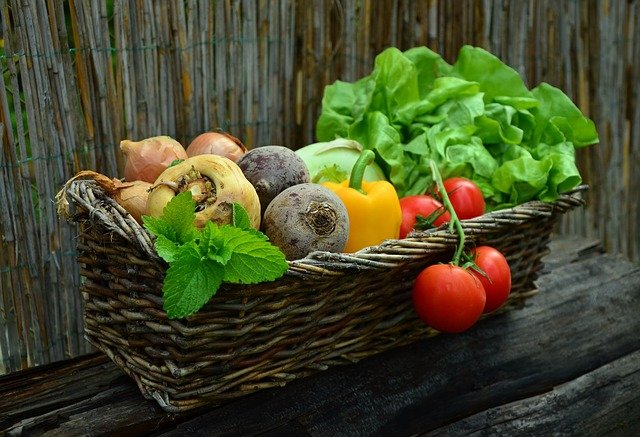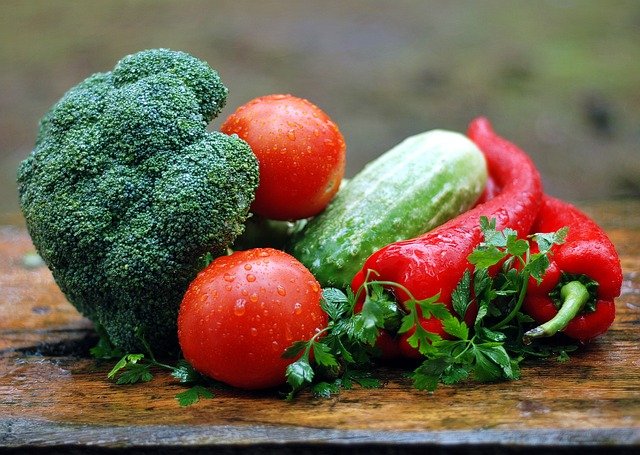10 Tips for Healthy Cooking
Date Posted: 13/12/2021

Tips to Help Your Domestic Helper Cook Healthy Foods
One of the biggest challenges we face in life is dealing with all we have to do. Between family, financial and personal responsibilities, we have a lot to do. If you want to cook something healthy, delicious, and nutritious, sometimes it can be even more challenging to find the right time to prepare everything.
Eating in your kitchen is truly the best way to eat healthily. Even if you love all the "good for you" restaurants, you might find that even with their healthy food claims, they use a lot of oil, sweeteners, and other hidden ingredients that we prefer not to eat and that we would certainly not eat.
However, if you are lucky enough to live in a place where domestic help is convenient and affordable, you can ask your wonderful helper to help you with the cooking. However, outsourcing healthy cooking to someone else isn't always the easiest thing to do. We all had a few comical or "lost in the translation" moments in the kitchen.
So how can we help your helper cook healthier and tasty meals? Here are some methods you can try:
Talk to your domestic helper about what healthy eating means to you.
Healthy eating is personal, and we all have different ideas about what health preferences we choose. You can eat a vegetarian, gluten-free, or plant-based diet, or you can follow the general principles of healthy eating. You may not want to use a lot of refined white sugar in cooking or prefer to avoid fried foods of any kind, be sure to share your nutritional preferences with your helper to help her prepare a healthy meal.

Stock your Pantry
Stock up your pantry with basic products such as premium oils, organic broth, spices, curry paste, dark chocolate, seasonings, fresh and dried herbs, Himalayan pink salt, nuts, and whole grains like brown rice oats, and quinoa. Having a supply of healthy foods in the pantry will save you time and money and allow you to prepare tasty meals when there is food in the refrigerator to eat.
Learn Some Simple Ingredient Substitutes
Often, replacing a healthier ingredient with a particular ingredient that may not be the healthiest option can allow you to eat "decadent" or favourite foods by substituting more nutritious ingredients. Encourage her to use coconut sugar instead of refined white sugar, brown rice instead of white rice, quinoa instead of couscous, caramelize an onion with healthy soup instead of oil, and the list goes on.
Get Healthy and Tasty Recipes
Finding recipes with bold flavours made from healthy ingredients such as fresh herbs, spices, and citrus sauces is the way to go. When the food is tasty, there is no reason to miss it.
Don't focus on plain broccoli and quinoa, but use good recipes from reputable, healthy sources like cookbooks and food blogs. I recommend books like the recent "Your Outsourced Kitchen" or the Delicious Ella series. The former is a collection of amazing healthy recipes that don't compromise on health or taste and are explained simply and presented in English, Chinese, and Cantonese, so your helper can easily cook you delicious and healthy meals without doing anything lost in translation. There's also a menu planning section with suggestions for delicious meal combinations, a pantry checklist, and plenty of healthy salads, soups, smoothies, small plates, fish, meat, and desserts.

Practice usually makes it perfect.
The first time your domestic helper cooks something for you, it might not be exactly what you expect, but it probably will be after a few times. It is a good idea for you and your domestic helper to briefly discuss the new recipes as they appear to see what they can change next time; she may need to cook more or adjust the seasoning. Or perhaps there is a healthier way to prepare it?
Cook with love: read cookbooks like a novel.
One of the perfect and easiest ways to fall in love with healthy cooking is to delve into a variety of healthy cookbooks. Encourage your helper to take the time to read her healthy cookbooks and to read them with love. She will probably be delighted to prepare these delicious dishes by looking at the recipes and photos and imagining all the flavor and recipe combinations.
Use Nonstick Cookware
Nonstick cookware is great for several reasons. This means that you can cook with much less oil, have less risk of burnt or char food, and it's easy to clean. Some basic cooking supplies include a nonstick skillet and a frying pan.

Use More Vegetables
Include vegetables in every meal. Your fruits and vegetables are the basis of your minerals and vitamins and should serve as the basis of your diet. There are so many recipes that your helper can easily make with vegetables.
Reduce Fat to a Minimum
Consider going with lean meats and low-fat dairy products, and limit processed foods to minimize hidden fat. Nuts, seeds, fish, soybeans, olives, and avocados are healthier choices because they contain long-chain essential fatty acids, and other good nutrients accompany these fats.
If your domestic helper must add fat during cooking, let her minimize it and use monounsaturated oils such as canola and olive oil.
Suggestions for Low-Fat Cooking include:
- Cook in liquids (such as broth, wine, lemon juice, fruit juice, vinegar, or water) instead of oil.
- If you must use oil, try a cooking spray or apply a small amount of oil with a pastry brush.
- Instead of soups or cream in sauces, use low-fat yoghurt, and low-fat milk evaporated skim milk or cornstarch.
- Use pesto, sauces, chutney, and vinegar instead of cream, butter, and cream sauces.
- When browning the vegetables, place them in a hot pan and sprinkle with oil instead of adding oil to the pan. This reduces the quantity of oil that vegetables absorb during cooking.
- An alternative to browning vegetables by deep frying them is to put them in the microwave first, then brown them on the grill for a minute or two.
Reduce Salt
Salt is a common flavour enhancer, but research suggests that a diet high in salt can contribute to some health problems, including high blood pressure. Here are some tips to consider for reducing your salt intake in your quest to live and eating healthy foods:
- Add a drop of oil, vinegar, or lemon juice at the end of cooking or on the cooked vegetables; it can enhance flavours in the same way as salt.
- Avoid processed foods loaded with salts, such as instant or flavoured noodles, canned or dehydrated soup mixes, French fries, and salted nuts.
- Choose fresh or frozen vegetables, as pickled and canned vegetables tend to be salty.
- Choose low-salt bread and cereals. Bread and cereals are important sources of dietary salt.
- Don't automatically add salt to food; taste it first.
- Iodized salt is preferable. Plant foods are an important source of iodine in the diet. Eating fish at least once a week reduces the need for iodized salt.
- Limit your intake of salted processed meats such as salami, ham, corned beef, bacon, smoked salmon, hot dogs, and chicken bread.
- Margarine and butter are high in salt, but "no salt added" varieties are available.
- Most cheeses have high salt concentration, so limit your intake or choose low in salt varieties.
- Reduce the use of soy sauce, ketchup, and processed sauces (for example, mayonnaise and salad dressings) as they contain high salt content.
General tips for healthy cooking
Healthy cooking methods include:
- Avoid adding oils and butter; use nonstick pans instead.
- Add little or no salt to food during cooking.
- Eat more food that is high in protein (i.e., fish), low in fat, and high in omega-3 essential fatty acids.
- Eat more vegetables and fresh green vegetables.
- Edit or delete recipes that contain butter or request cooking or frying with animal fat.
- Remove chicken skin and remove the fat from the meat.
- Steam, bake, grill, boil, or microwave.
Healthy Eating suggestions
- Long-term deprivation, like a quick diet, does not work. Treat yourself to occasional, guilt-free treatment.
- Make every meal a delight. Set the table. Eat with your family. Give yourself the ability to enjoy food without distractions like watching TV.
- Spend time on the presentation. You will enjoy a meal if it is visually appealing and tasty.
- You are less likely to overeat if you eat slowly and enjoy every bite.
Summary
Eating healthy foods doesn't mean giving up your favourite foods. Your favourite foods can be easily adapted to provide a healthier alternative. For example, nonstick cookware can be used to lessen the need for cooking oil. Also, vegetables can be steamed in the microwave rather than cooked to maintain valuable nutrition.
There are many ways to make your meals healthier. Limit fat, sugar, and salt, and include plenty of vegetables, fruits, grains, lean meats, and low-fat dairy products in your cooking. Foods with added fat, sugar, or salt are less healthy than foods in which they are naturally found.

